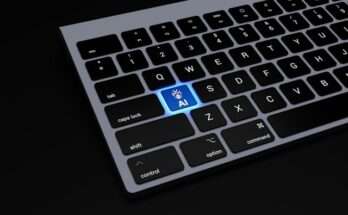Types of Prototypes, Prototypes are an essential part of the product development process and can be used in almost every step to ensure the best quality product reaches your customers’ hands. Prototypes allow you to see what the design of your product will look like and how it will function, so you can make changes and revisions before full production begins. This prevents costly mistakes, ensures you deliver on the promise of your idea, and impresses your potential investors (if applicable). With such an important role in the product development process, why are there so many different types of prototypes? What do they each do? Why should you use one over another?
Different Types of Prototypes and Why They Matter
- Minimum Viable Product (MVP)
- Proof of Concept (POC)
- Rapid Prototype
- Customer Tested Prototype
- UI Prototype
- Clickable Prototype
- Low Fidelity Prototype

Minimum Viable Product (MVP)
An MVP is a version of a product with just enough features to satisfy early customers and to provide feedback for further product development.
It’s essential to create an MVP because it allows you to start gathering data about your users and their needs without investing too much time or money into your product.
Plus, an MVP can help you validate your business idea before you invest too much time or money into it.
There are three main types of prototypes: functional, visual, and interactive.
Functional prototypes are focused on the functionality of the product and how it works.
Visual prototypes are focused on the look and feel of the product.
Interactive prototypes are a combination of both functional and visual prototypes and allow users to interact with the product.
For more information on prototypes, you can check out our resources here
Proof of Concept (POC)
A proof of concept is a working prototype that demonstrates the feasibility of your idea. This prototype is often used to raise funding or test market viability. A POC doesn’t need to be fully functional, but it should show how your product will work. You can use this as a way to make sure you’re heading in the right direction before investing too much time and money into your project. If you don’t have any feedback on your product, there’s no way to know if what you’re doing is worthwhile.
Here’s an example. Let’s say you’re thinking about starting a new outdoor apparel brand. Your POC might involve selling T-shirts in your local area to see if people will buy them from you instead of a traditional retailer. Alternatively, it could be as simple as making a poster that advertises your potential business and sticking it on telephone poles to see how many people are interested.
Rapid Prototype
A rapid prototype is a quick and dirty version of your product that allows you to test key assumptions and gather feedback from users early on. This type of prototype is often used in conjunction with user testing, as it can help you validate your design decisions.
Low-Fidelity Prototype (seven sentences): A low-fidelity prototype is a rough version of your product that is used to test high-level concepts. This type of prototype is often used early on in the design process, as it can help you explore different ideas quickly and cheaply.
High-Fidelity Prototype (seven sentences): A high-fidelity prototype is a close approximation of your final product.
Customer Tested Prototype
A customer-tested prototype is a version of your product that is given to potential customers to test out and provide feedback on. This type of prototype is important because it allows you to get real feedback from people who will be using your product. Plus, it can help you identify any potential problems with your product before it goes to market. Sometimes, these prototypes are given back to the designers so they can make changes based on the feedback they received.
Mock-Up Prototype: Mock-up prototypes are versions of your product that look like the final product but are not meant for testing or use. These prototypes are often used as part of a pitch deck or presentation where a company wants to demonstrate what their product will look like in order to sell their idea and convince investors to invest in them.
UI Prototype
A UI prototype is a visual representation of what your product will look like. It’s important to create a UI prototype early on in the design process because it will help you communicate your vision to potential investors, partners, and customers. Plus, it can help you get feedback about the overall look and feel of your product.
There are three main types of UI prototypes: low-fidelity, medium-fidelity, and high-fidelity. Low-fidelity prototypes are quick and easy to make, but they don’t provide much detail. Medium-fidelity prototypes provide more detail and begin to look more like the final product. High-fidelity prototypes offer an experience that is nearly identical to using the finished product. The type of prototype you use depends on what stage of development your project is in, how quickly you need it for prototyping purposes, and how detailed you want it to be.
Clickable Prototype
A clickable prototype is an interactive mockup of your app or website. It’s used to simulate the user experience and test user flow. Clickable prototypes are essential for user testing, as they help you identify pain points and areas for improvement. Plus, they’re a great way to get feedback from potential customers or investors. Non-clickable Prototype: Non-clickable prototypes are essentially designed on paper that doesn’t allow interaction with the product. These types of prototyping work best when designers want to show someone how their design will look in its final form without revealing too much information about what it does.
Low Fidelity Prototype
A low-fidelity prototype is often the first step in the design process. It’s quick and easy to create, which makes it perfect for exploring different ideas. Plus, low-fidelity prototypes can help you get feedback early on in the design process. However, since they’re not very detailed, they may not be realistic enough to test certain aspects of your design. Plus, these prototypes are hard to share with others because they don’t look like the finished product.
High Fidelity Prototype: If you want a more detailed prototype that looks like what your final product will look like, then a high fidelity prototype is a better option. The downside? These types of prototypes take more time and effort to make- so it might not be worth it if you’re exploring an idea or looking for feedback. Interactive Prototype: Interactive prototypes are great if you want people who don’t know much about your product (or don’t have any knowledge) to get a feel for how it works without even touching anything!




